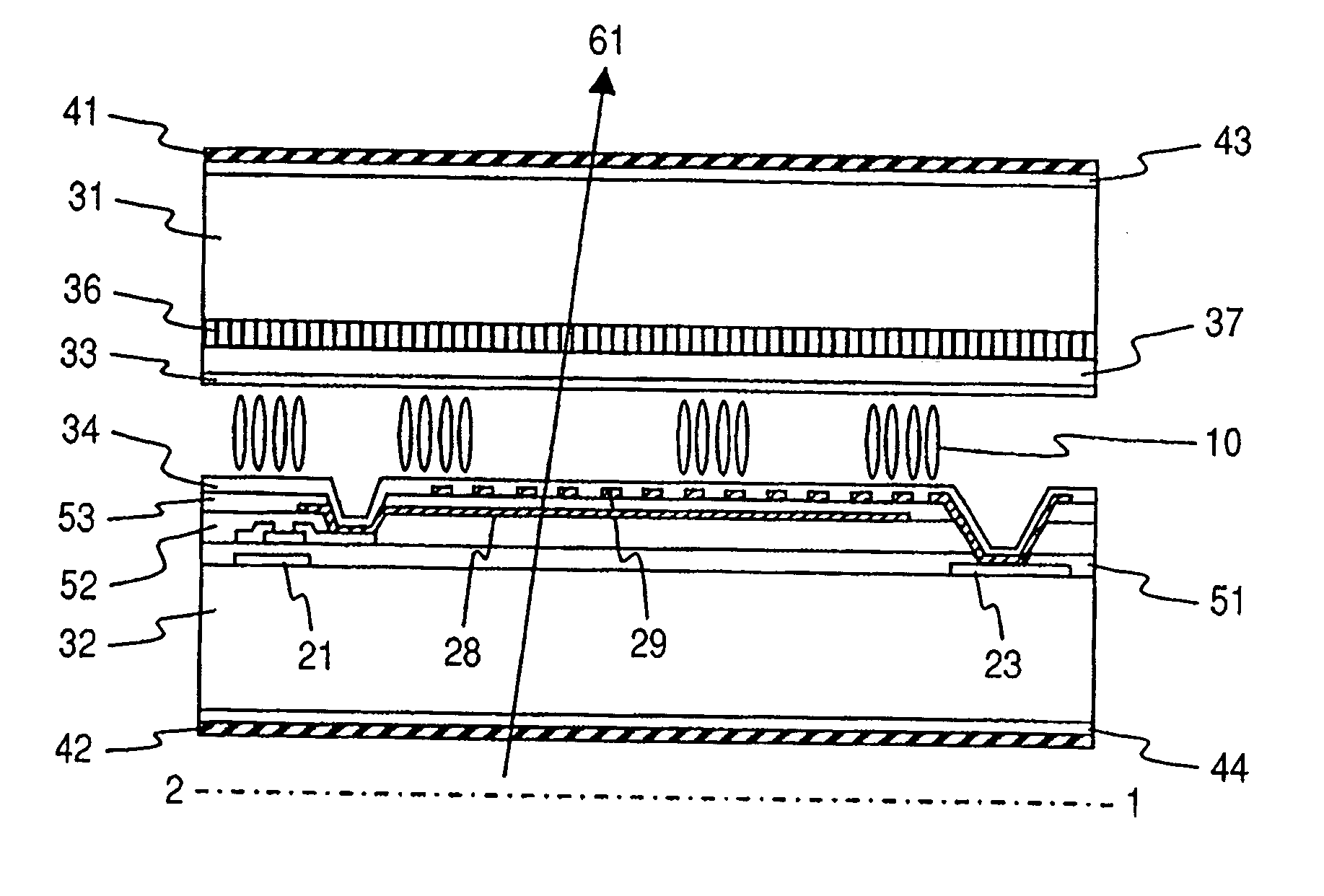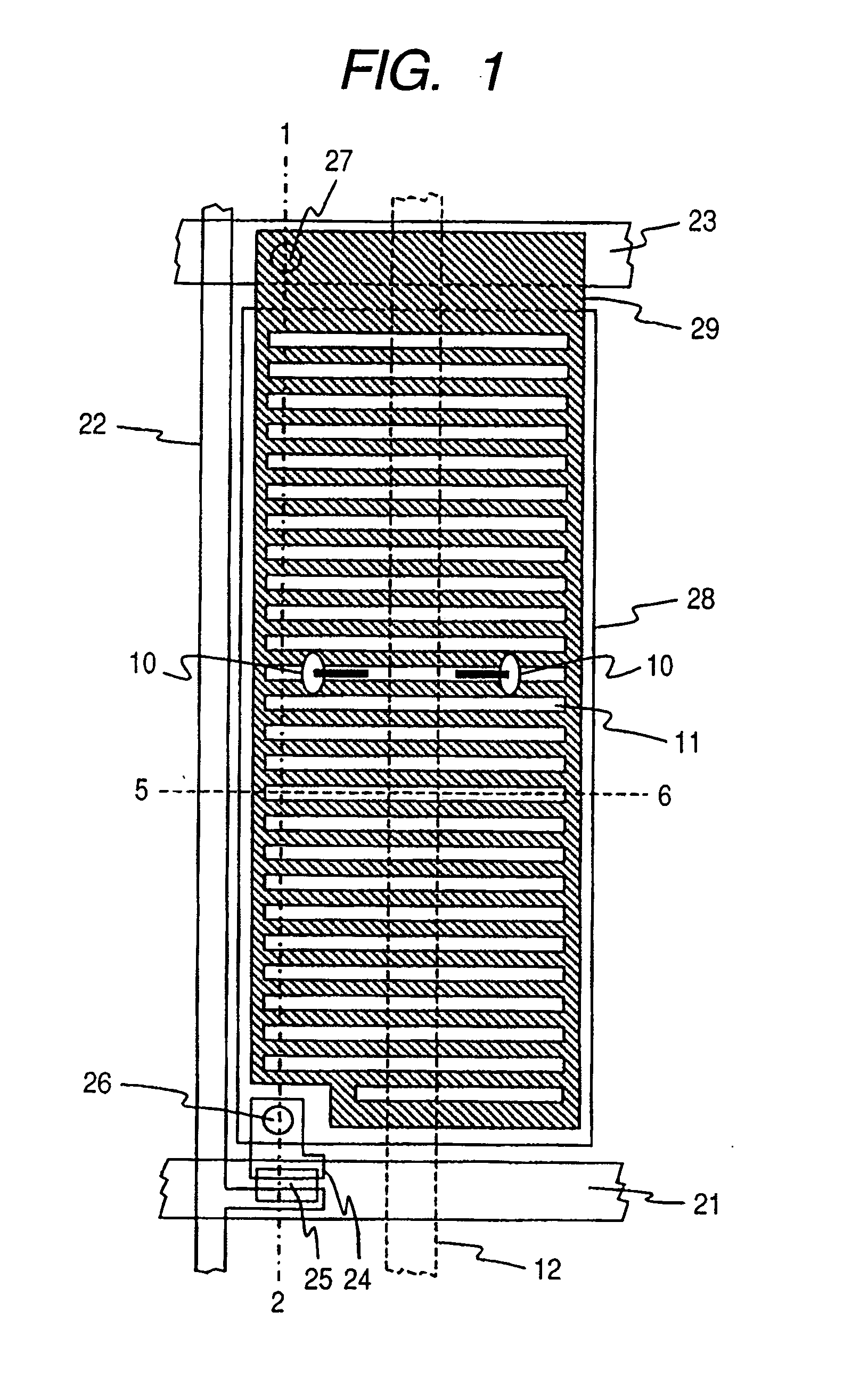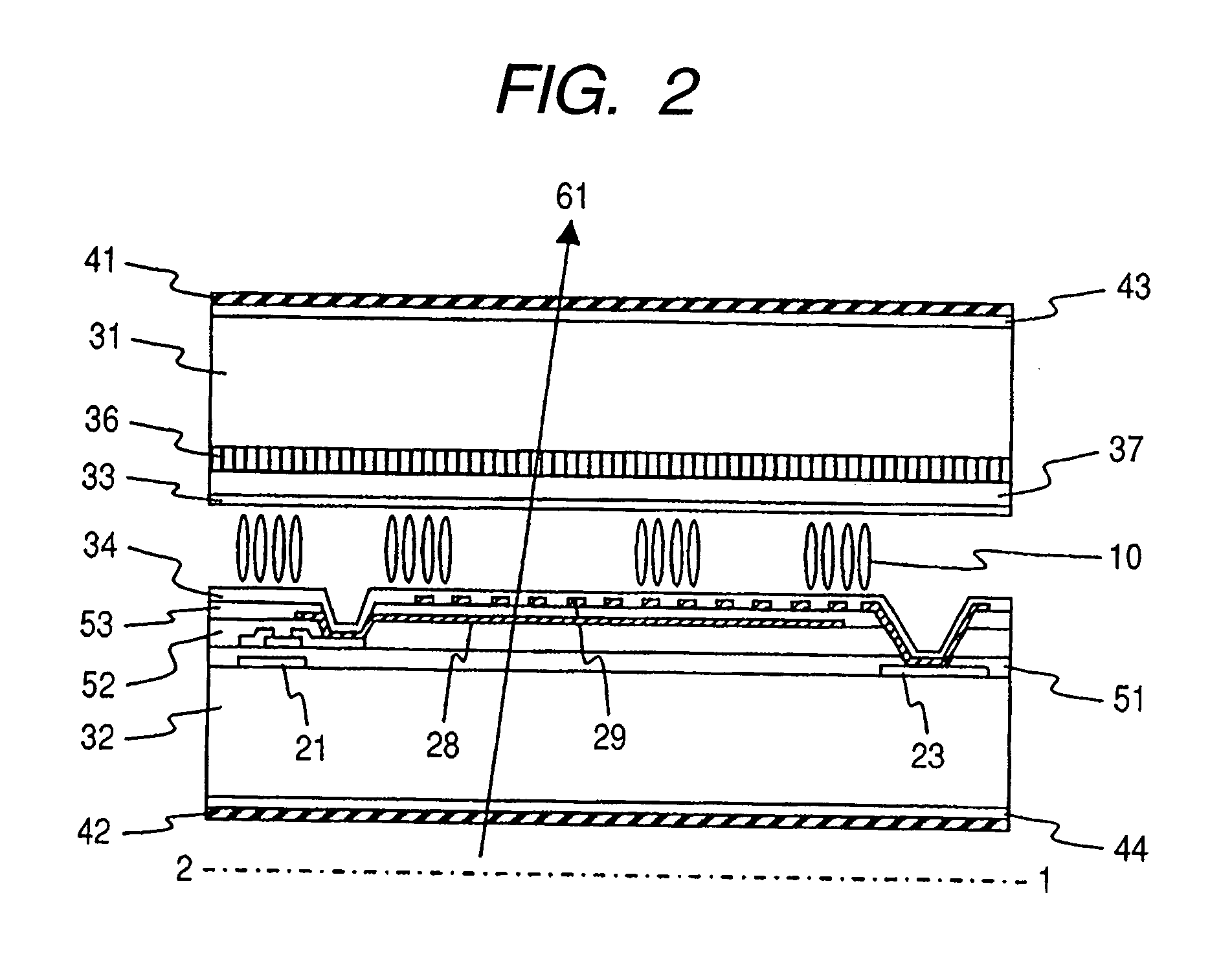Liquid crystal display device
a liquid crystal display and display device technology, applied in non-linear optics, instruments, optics, etc., can solve the problems of excessive brightening of images, deteriorating contrast ratio, and oblique deterioration of the reproductivity of the gray scal
- Summary
- Abstract
- Description
- Claims
- Application Information
AI Technical Summary
Problems solved by technology
Method used
Image
Examples
first embodiment
[0070]FIG. 2 shows a cross-sectional view of one pixel that constitutes a liquid crystal display device according to the present invention (a cross-sectional view taken along a chain line shown in FIG. 1), and FIG. 1 shows a top view of a second substrate 32 viewed from a normal direction. FIG. 1 mainly shows a plan distribution of a formation of the second substrate side 32. Only alignment control structure 12 indicated by a broken line is shown by the formation of a first substrate side 31. Also, FIG. 1 shows plural lines and plural electrodes. Because those lines and electrodes are not always flush, they are so distributed as to be partially overlapped with each other. One of those electrodes which is closest to a liquid crystal layer is hatched.
[0071] The liquid crystal display device according to the present invention mainly includes a first substrate 31, a liquid crystal layer 10, and a second substrate 32. The first substrate 31 and the second substrate 32 sandwich the liqui...
second embodiment
[0108] In the first embodiment, as shown in FIG. 1, the alignment control structure 12 is disposed in parallel to the longer side direction of one pixel. In this case, a distance between the alignment control structure 12 and the liquid crystal layer within a pixel which is farthest from the alignment control structure 12, that is, the liquid crystal layer at the end of the pixel which is close to the signal line 22 is short, and the liquid crystal alignment control effect due to the alignment control structure 12 is liable to be influenced on one entire pixel.
[0109] On the contrary, in this embodiment, as shown in FIG. 7, the boundary of two domains is disposed in parallel to the shorter side direction of one pixel. More specifically, the direction of the slits 11 is set to be in parallel to the signal line 22, and the alignment control structure 12 is disposed in parallel to the scanning line 21, and passes through the center of one pixel. Even in this case, the same oblique char...
third embodiment
[0114] In this embodiment, both of the common electrode 29 and the pixel electrode 28 are of the comb-like planar structure, and formed in the same layer. FIG. 8 shows a plan structure of one pixel of the liquid crystal display device according to this embodiment. The pixel electrode 28 is hatched as with the common electrode 29, and its comb-like structure is disposed in parallel to the signal line 22.
[0115] The common electrode 29 is disposed in the vicinity of the signal line 22, and has a function of shielding the signal line potential. A surface of the first substrate 31 in proximity to the liquid crystal layer 10 disposes the alignment control structure 12. The alignment control structure 12 is of the stripe-like plan structure as in the second embodiment, and the stripe is disposed in parallel to the scanning line 21, and distributed so as to divide one pixel into two equal parts. The lines of electric force are formed in an arch between the common electrode 29 and the pixel...
PUM
 Login to View More
Login to View More Abstract
Description
Claims
Application Information
 Login to View More
Login to View More - R&D
- Intellectual Property
- Life Sciences
- Materials
- Tech Scout
- Unparalleled Data Quality
- Higher Quality Content
- 60% Fewer Hallucinations
Browse by: Latest US Patents, China's latest patents, Technical Efficacy Thesaurus, Application Domain, Technology Topic, Popular Technical Reports.
© 2025 PatSnap. All rights reserved.Legal|Privacy policy|Modern Slavery Act Transparency Statement|Sitemap|About US| Contact US: help@patsnap.com



